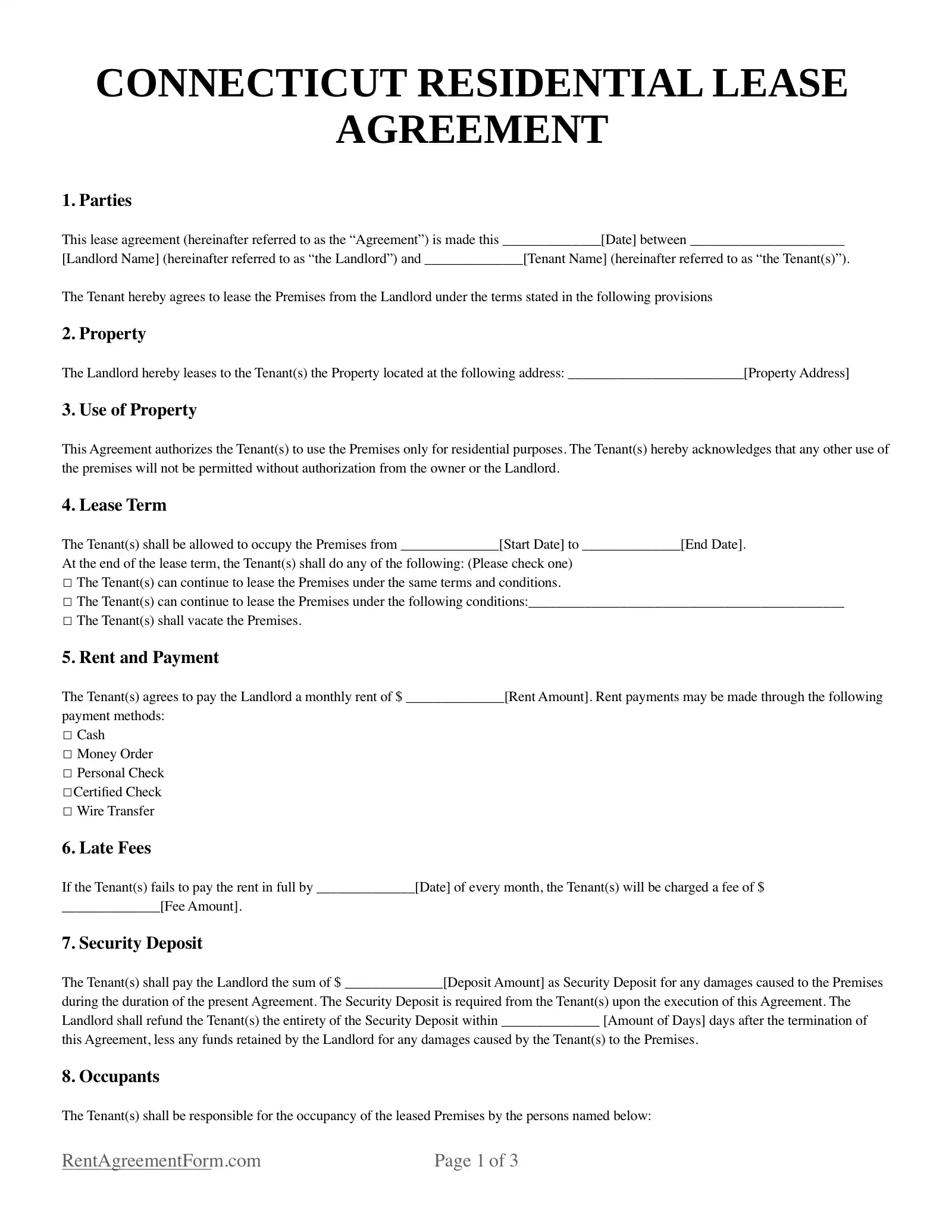Connecticut Residential Lease Agreement Form
Connecticut’s highly ranked schools, low crime rates, and overall higher quality of living make it a wonderful state to reside in.
To rent property in the area, you’ll have to meet with realtors and fill out a residential lease agreement form. The residential lease agreement form is a simple legal document that outlines the terms and conditions between a landlord leasing their real estate property and the tenant looking to live in it. It allows the tenant to rent real property in exchange for a monthly fee or payment.
Once both parties agree on the terms detailed in the form, the document becomes legally binding until the stipulated termination or early termination of the lease.
By submitting a filled-out rental application template, the prospective tenant is giving the landlord permission to perform a routine background check. The check usually looks into an individual’s financial status, capacity to pay monthly rent, criminal records, and eviction history (if there are any).
Once the landlord has accepted the application, both parties can go ahead and fill out the residential lease agreement form. You can get a fillable and printable residential lease agreement form online.

Required Disclosures
The landlord is required by law to give certain disclosures to the tenant about the property. Failing to do so can mean legal consequences and/or monetary penalties.
Bed Bug Disclosure: The landlord must provide information about the last bed bug inspection date when the agreement is signed. If the property has a bed bug infestation, the landlord is not allowed to lease it (Public Act § 16-51).
Landlords must also disclose if a neighboring property has had bed bugs in the recent past. Once the landlord has certified that there is no known current infestation of bed bugs, both parties can go ahead with the form. Common Interest Community Notice: The landlord must also inform the tenant if the property is located in a common interest community since shared amenities may entail fees.
Lead-Based Paint Disclosure: If a property’s exterior or interior walls have lead-based paint, it is the landlord’s duty to inform the tenant of this fact. In such cases, landlords in Connecticut will have to attach a separate lead-based paint disclosure to the lease agreement form.
Lead-based paint is hazardous since it releases toxic chemicals into the air. Many of the homes built before 1978 carry this risk since the paint was only banned that same year (Federal law 42 U.S.C. § 4852d).
Operative Fire Sprinkler System Notice: According to State Fire Safety Codes, the landlord must provide notice to the tenant if the property has an operating fire sprinkler system installed.
Rent Grace Period
It is the tenant’s responsibility to remit rent each month. Failure to do so on time can merit a late fee on top of the agreed rent. In Connecticut, the landlord can only charge a late fee once nine days have passed since the original rent due date (CT Gen Stat § 47a-4).
Security Deposits
A security deposit is an advanced payment made by the tenant and is distinct from the monthly rent. In Connecticut, landlords cannot ask for a security deposit that is worth more than two months’ rent. If the tenant is 62 years or older, the security deposit may be reduced to the equivalent of one month’s rent.
The main purpose of a security deposit is to protect the landlord in case the tenant cannot pay rent or the tenant breaks or damages the property during the rental period.
As a renter, it is wise to note the condition of the property or room the day you move in, including the furniture, plumbing, architecture, etc. Cross-check the condition with your landlord to avoid paying for damage that you didn’t cause or damage that already existed before the start of the lease.
The landlord is required to give back the security deposit 30 days after the tenant has moved out. If the landlord fails to do so, the landlord will have to pay the tenant twice the amount of the security deposit (CT Gen Stat § 47a-4).